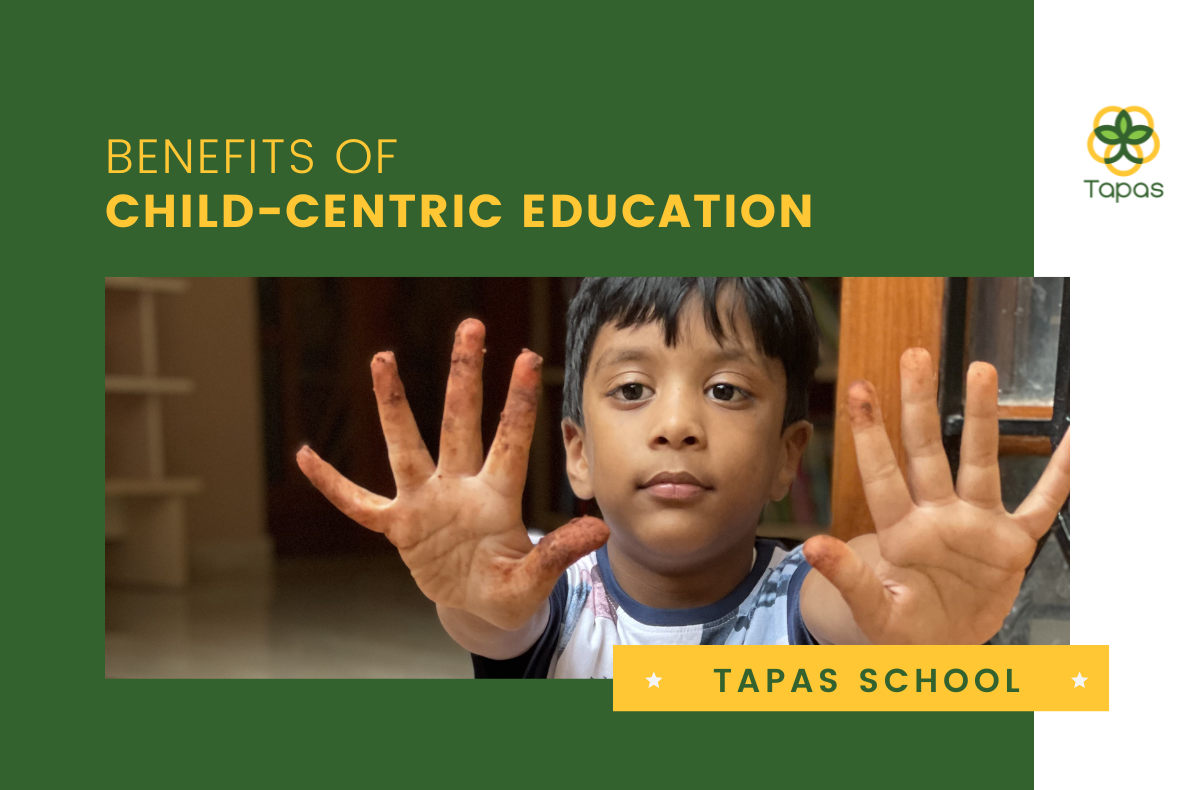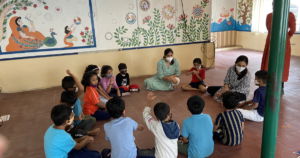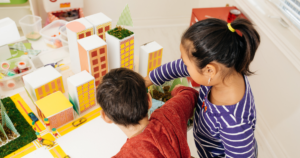The Importance of Good Parent-Teacher Communication
For an educational experience to be embraced and integrated wholeheartedly, it has to come from a joint effort from everybody involved in the progressive learning process, the student, the teacher and the parents.
For academic success, a stimulating environment is essential which includes educators that are committed to the cause, short-term and long-term educational goals, easy access to nature-based education, formulation and regulation in the leadership and hierarchy of the educators, and excellent familial support systems.
It is a known fact that when parents are involved minutely in their child’s education, there are great results. Hence, the teacher-parent-child triangulation needs to be smooth. This means that the parent-teacher relationship has to be honest and engaging. Tapas Education doesn’t miss any opportunity to organise events at school for the parents to get involved along with their children, and thus build up the learning relationship together!
For a child that is just starting out at school, his/her parent is their role model which soon changes to the teacher being one too. For this transition to happen smoothly year after year, there needs to be positive communication between the parents and teachers and evidently, this proves to be positive in the child’s academic performance each year too.
For education to have a positive impact, it is imperative that the learning that is formal at school should be incorporated in an informal way at home too because a child’s intellectual development happens at both places.
And for this journey to be successful, it is crucial that the communication between the parents and teachers is consistent as this impacts the emotional, cognitive and social development of the child. At Tapas Education, through stimulating curiosity and the pursuit of knowledge between teachers, students, and parents, we would like to nurture lifelong learners. Furthermore, we think that expositions like Poshak Sabha and Summit of The Minds enable us to communicate with the Tapas families more effectively and to forge greater bonds with them.
Positive Parent-Teacher Communication
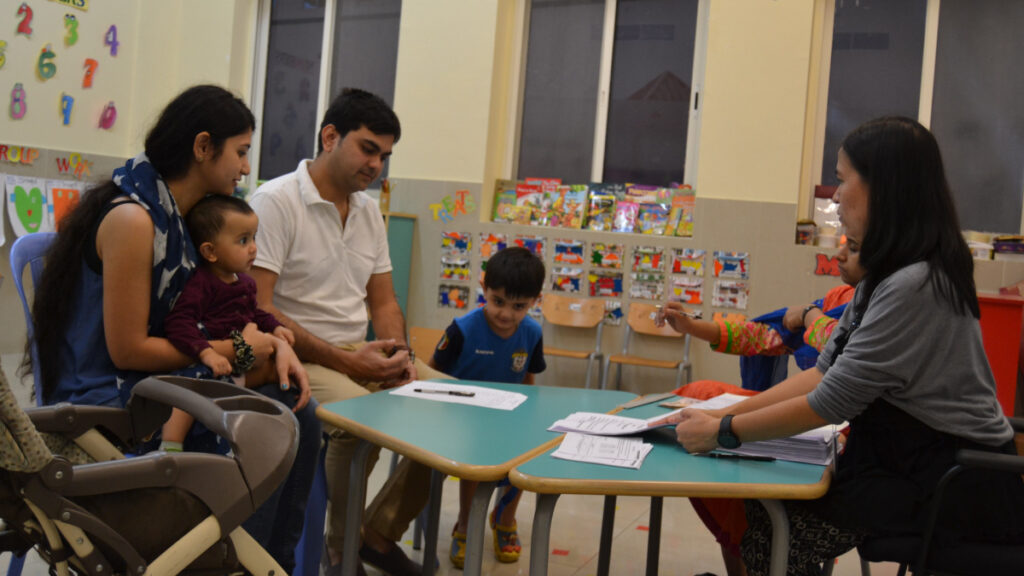
At the onset of each educational year, there is a new relationship forged between the parents and teachers that ends when the child goes to the next grade. At first, introductions are made and then a relationship is established based on the common factor – the student. Typically, the school system has parent-teacher meetings that are known as PTMs. These are set early in the academic year for the whole year and this is where the parent-teacher interaction takes place. Although, in the lower grades, teachers frequently meet the parents at pick-up and drop-off times too. Also, the option of communicating via mail and phone is always available.
With consistent communication, teachers can inform the parents about the child’s achievements. At Tapas Education, we negotiate through the “two-way communication” model with parents and let them decide what suits their children. A collaborative effort by both the teacher and the parents can cumulatively have a positive impact on a child that is struggling with behavioral problems or grades. If the teacher cooperates and empowers the parent, then they can put in the right amount of help for the child at home too. This is a win-win situation because it augments the teachers’ efforts at school.
Child Centric Teaching
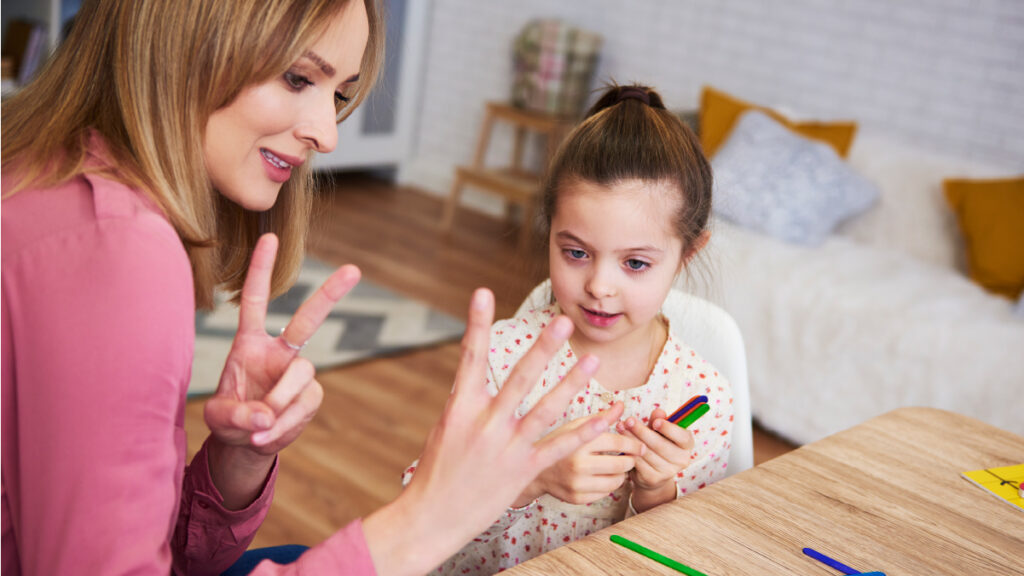
When all of the involved parties in a child’s education, parents and teachers per se, have a positive relationship, it impacts the child’s overall education and growth in a wholesome manner. This teamwork has great advantages for the student’s success. We host events like “Summit of the Minds” as another way to promote two-way communication between students, teachers, and parents. Summit Of the Minds is an exposition that is totally run by children. The students lead the exposition from beginning to end.
It is a learner-led exposition that improves students’ communication skills while also increasing their sense of accountability and responsibility.
- The child tends to work harder with Genuity and piqued interest levels. They take part in the goals set for their class or school proactively. They get inspired to achieve more.
- The student gains more respect for their educators when they see the teachers taking initiative in each of the students and their parents proactively. The respect and inclusivity shown by the teacher to the parents make the student have more regard for that teacher.
- The student can solve problems easier when there is a level of trust between the teacher and parents that translates to the child too. Any issues faced in daily activities or in their studies, the child is able to comprehend and ask questions or seek help confidently. This is only due to the faith in the relationship that has been established between the three given parties.
- One of the main social skills is two-way communication and it is learned passively. A child apes effective communication between adults and peers. An active environment and an advanced channel of communication intended to steer the child in the direction of observing, absorbing and open learning. The interactions with the classmates, teachers and parents are thus, successful.
- A conducive environment for learning brings about small and big achievements like awards, good grades, etc., and students thrive on accomplishments. The collaborative relationship between parents and teachers can be enhanced when they motivate and celebrate the child’s successes, big and small equally. This happens when there is good communication and the effect of this is that it will motivate the child to shine better.
A Few Strategies for Teachers
When the teacher understands that the parent’s involvement is a job half done for the teacher itself, learning and teaching become an easier process. That’s when our two-way communication at Tapas Education works out.
A few pointers to start in the right direction.
- Communicate with the parents consistently.
- Set clear classroom expectations and communicate them to the parents.
- Have open house events and special projects that parents can be a part of.
- Seek feedback from parents regularly.
- Have patience with parents and empathize with them if they take the time to understand.
- Prioritize the parent’s timings for meets and give them importance so that they feel confident to take part in the day-to-day activities of the school.
A Few Strategies for Parents
Education starts at home. A child’s cognitive development starts the moment they are born. This makes it imperative for the parents to approach communication skills correctly as they are the first role models for their children. To accomplish a meaningful communication channel with the teachers, here are some tips.
- Be considerate of the teacher’s schedule and show up on time.
- Establish a channel of communication that suits the teacher and stick to that throughout the year like two-way communication.
- While you are dealing with one class teacher per year, that teacher is dealing with many parents hence, respect their off-school hours time.
- For a PTM, carry a list of questions that you can ask and get answers for in a concise manner and in the given time slot.
- Get pointers on how you can help teach your child at home to ease the workload on both the child and the teacher.
- Small stuff goes a long way. Gestures like signing the notebook or short comments, appreciation for the teachers, volunteering in projects or even greeting the teachers amiably when you drop off or pick up the child can do wonders for the communication channels.
- Share all the relevant information in the first half of the academic year, like report cards and where you think the child needs help. Also, send notes regularly on the child’s academia and history so that it helps the teacher to delve better into the child’s psyche and help him/her do better in school.
- Make sure you respond to the teacher’s queries regularly and not just wait to meet at the PTMs. Correspond systematically and routinely with the teachers to stay involved in the child’s progress.
It Takes a Village
Whether you are a parent or an educator, we all need to work hard toward a child’s academic success. And for a child to succeed at school, it does not mean just the curriculum but also an entire support system that has its roots at both, the home and school. When a child gets better scores and the development is wholesome in a holistic manner, it is not only the success of the child but of the whole gamut of communication between the three entities involved. At Tapas Education, our two-way communication model between the parent and teacher brings about good relationships and instills much-needed confidence in little children.
“From the earliest days, we knew that it was not possible to do good work with the little children without the help of their parents.”
― Caroline Pratt, I Learn from Children
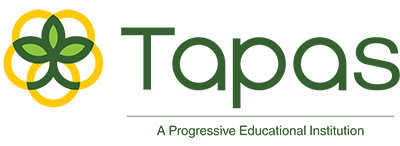

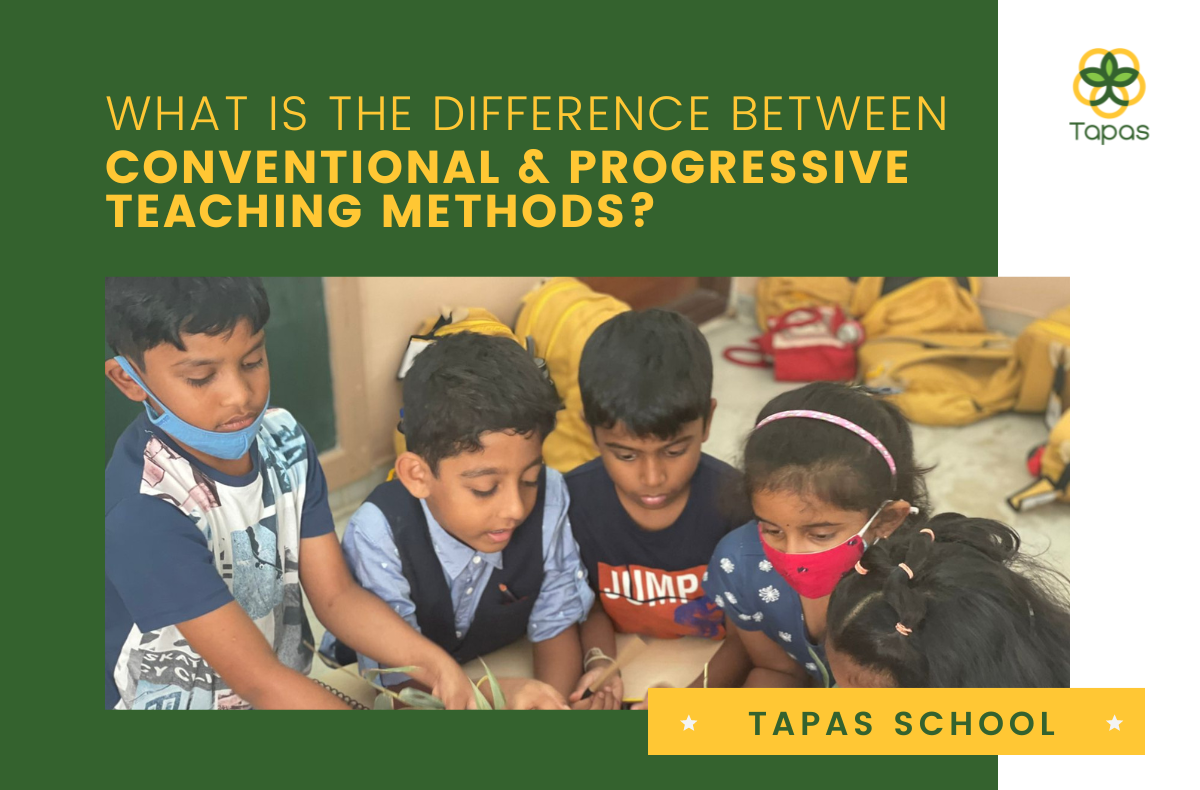
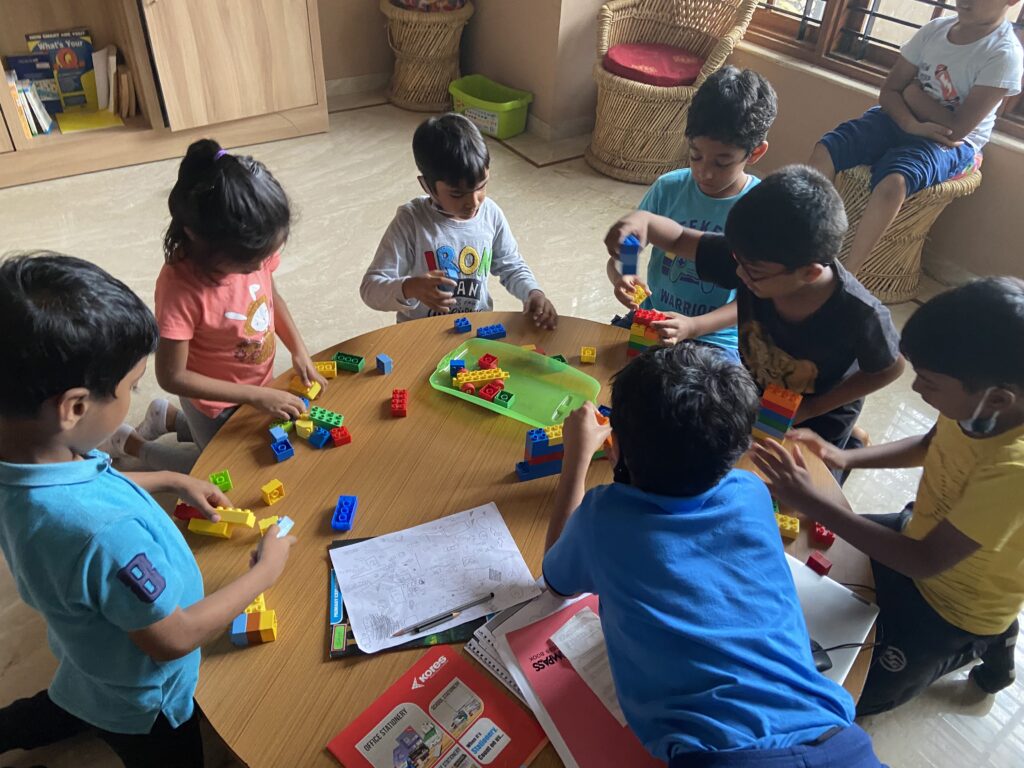

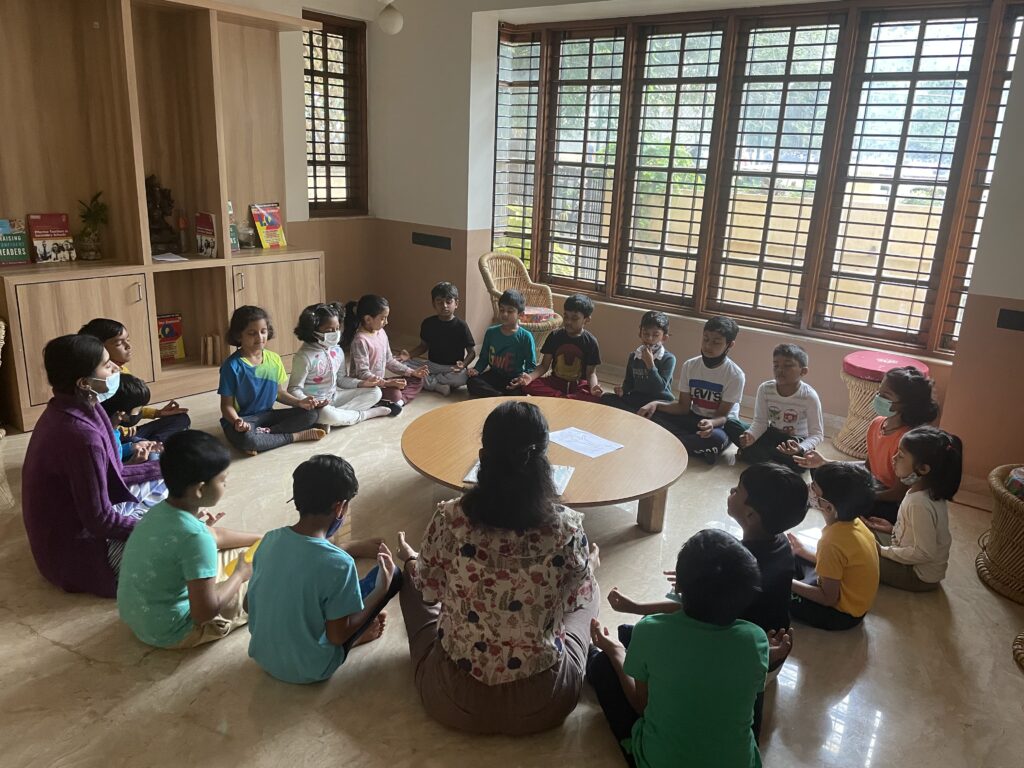 Traditional or Progressive, both methods have their pros and cons. How amazing would it be if a parent got the best of both worlds? This is where Tapas education, a
Traditional or Progressive, both methods have their pros and cons. How amazing would it be if a parent got the best of both worlds? This is where Tapas education, a 